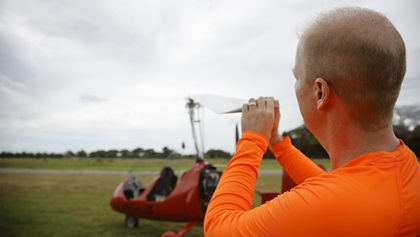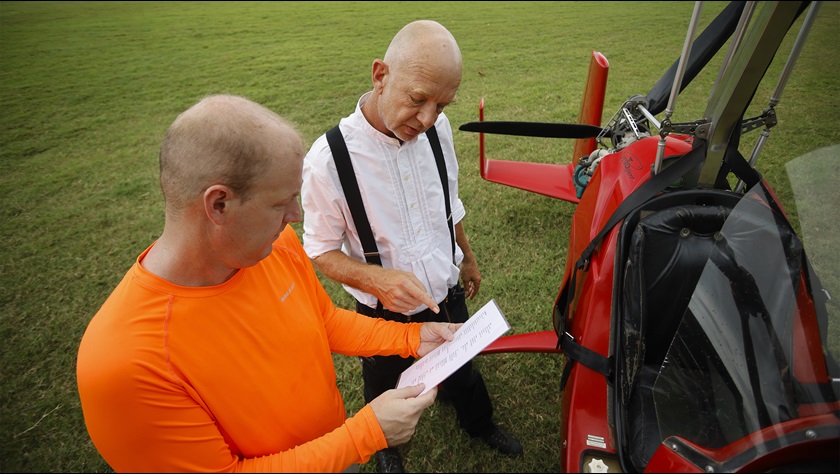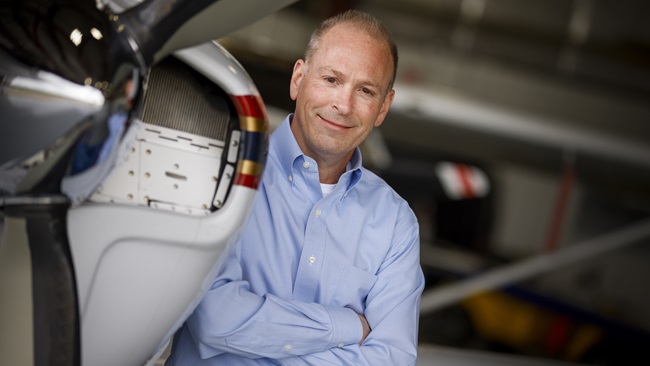Gyro Hero: Sizing up options
Intrepid editor shops perpetual autorotation
Among aviation’s mainstream airplane crowd, vast swaths of fun, light aircraft get short shrift. Ultralights, powered parachutes, trikes, and gyroplanes are often grouped under the heading of “cool, but crazy.” The implication is that they’re too unregulated, unsafe, and impractical to be taken seriously. I think this is a mistake.
I did not expect to be in this position: learning to fly a gyroplane and writing about it. But poor access to fixed-wing airplanes, cost, COVID-19, and a host of other factors led me to explore gyroplanes and earn the certificate.
I found answers, and plan to spend the next several months sharing those, along with some stunning photography.
The basics
Under FAA regulations a gyroplane is in the rotorcraft category. It’s one class. Helicopters are another. Just like single-engine airplane and multiengine airplane are two classes within the airplane category. But the differences between gyroplanes and helicopters are much more significant than those between single- and multiengine airplanes.
The name trips people up. Many people, myself included, look at the rotor blades and want to call them gyrocopters. Do this in certain settings and you’ll be quickly smacked down and corrected. Technically, Gyrocopter is a brand, and I suppose to some people calling it a gyrocopter is like calling all airplanes Cessnas. But it’s probably a more accurate description.

The community traces its roots to the sport flying movement. In the United States most gyroplanes are experimental, and there’s an active group of pilots who like it that way. They play with interesting designs, refurbish early models from the 1950s, and love the idea of feather-light, bare-bones flying. We’re talking about nothing more than a seat bolted on to a frame with no cockpit to speak of, and everything flowing out in the breeze. These are your sunset and sunrise flyers who primarily fly in and out of short grass strips.
Then there’s another group of pilots, some who come from the certified airplane or helicopter world, who love the idea of flying something sportier than their normal rides. They tend to gravitate more to gyroplanes built in factories subject to some level of regulatory scrutiny. Although most of the designs would qualify under light sport aircraft performance and weight restrictions, factory-built gyroplanes were left out of the LSA rulemaking process, likely by a simple oversight. We’re left with a wide range of designs that meet the LSA requirements, and construction that can resemble anything from shed-built weed hoppers to carbon fiber masterpieces.
However, in Europe gyroplanes are flourishing, and three manufacturers in particular have created a range of safe, fun, and modern aircraft the rest of the world can take advantage of as factory-built options. They are AutoGyro from Germany, Magni Gyro from Italy, and ELA Aviation from Spain. There are many others, of course, including some good experimental designers in the United States. But none can compete in terms of volume sold with these three. AutoGyro makes the MTO line, and is the leader with more than 3,000 units in service worldwide.
A few years ago AutoGyro and its U.S. distributor were able to achieve primary airworthiness certification for the MTOsport 2017, Cavalon, and Calidus, meaning you can buy these factory built from Germany.
New gyroplanes from the factory range from the low $70,000s to more than $130,000 for the closed-cockpit Cavalon.
Training
The requirements to earn a gyroplane certificate vary depending on your current level of certification and what level you want to add. Gyro Revolution breaks it down pretty well. A sport pilot certificate can be earned by flying to proficiency, and then doing a proficiency check with an instructor. Airplane pilots wanting a private gyroplane certificate will need to complete 30 hours; helicopter pilots can add it by flying to proficiency. Those are some of the requirements.
Unfortunately, despite holding a certificate for commercial airplane and private helicopter, I’m currently flying in a country that requires 20 hours of experience before I can take a checkride. Given that transition is usually possible in 10 hours, the hope is to explore more advanced techniques in the final stages of training.
Next time: It's a … what?




